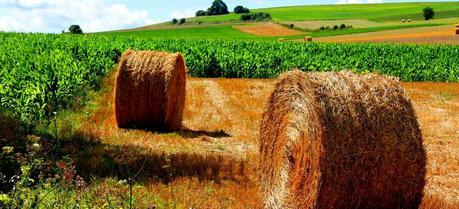 Lignin is an integral part of the secondary cell walls of plants. (Credit: Flickr @ Les Haines https://www.flickr.com/photos/leshaines123/)
Lignin is an integral part of the secondary cell walls of plants. (Credit: Flickr @ Les Haines https://www.flickr.com/photos/leshaines123/)Scientists at the University of British Columbia have developed a new type of biosensor that can help optimize bio-refining processes that produce chemicals, fuels and advanced materials.
It works by sniffing out naturally occurring bacterial networks that are genetically wired to break down wood polymer.
SEE ALSO: Heather Can Help UK Meet Bioenergy Targets
Most bio-refining agents are based on enzymes engineered from fungi. In this case, UBC researchers used the innovative screening approach to source and test genetic arrays from bacteria inhabiting coal beds. The biosensor reacts to a set of small molecules that are the residue of lignin’s natural degradation process. The researchers surmised that coal—ancient wood and plant biomass deposited before the evolution of fungal lignin degradation pathways—might contain bacterial pathways involved in the transformation process.
Lignin, a promising and abundant feedstock, comprises up to 40% of plant biomass. However lignin has so far resisted efficient decomposition into fuels, fine chemicals and advanced materials.“Nature has already invented microbial processes to degrade lignin—the tough polymer in wood and plant biomass that currently stymies industrial bio-refining,” says UBC microbiologist Steven Hallam.
“We needed to do the detective work, and develop the right toolkit, to isolate these processes in naturally occurring microbial communities from coal beds.”
Developed by Hallam and his team, the biosensor screens DNA from environmental samples to isolate the lignin-busting genetic machinery encoded in the samples’ resident microbes.
“We’ve found that bacteria harness adaptive genetic circuits to break down lignin and that these circuits can be mobilized in nature via horizontal gene transfer,” says Hallam. “Our biosensor and screening enables us to uncover this genetic network, and then further optimize it in the laboratory.”
The improved understanding of adaptive, eco-engineered lignin transformation could also lead to more tunable industrial processes.
“We need to remain sensitive to the complexity of natural processes that act on lignin, but this project has unearthed some basic organizing principles that will also enable us to exploit microbial processes more quickly for any number of engineering applications,” says UBC researcher Cameron Strachan.
“It’s a biological search function for biologists interested in harnessing naturally assembled genetic machinery.”
“This is a very significant breakthrough that provides important new insights into how nature breaks down lignin,” says Lindsay Eltis, co-author on the PNAS paper. “This work should also facilitate the development of innovative biomass-transforming processes to unlock the potential of lignin.”
The sensor, screening and adaptive genetic circuitry discovered with them have been licensed through the University Industry Liaison Office. A spin-off company, guided by the e@UBC program, is looking into ways to increase the scale of production of this technology.
Strachan, C., Singh, R., VanInsberghe, D., Ievdokymenko, K., Budwill, K., Mohn, W., Eltis, L., & Hallam, S. (2014). Metagenomic scaffolds enable combinatorial lignin transformation Proceedings of the National Academy of Sciences DOI: 10.1073/pnas.1401631111
